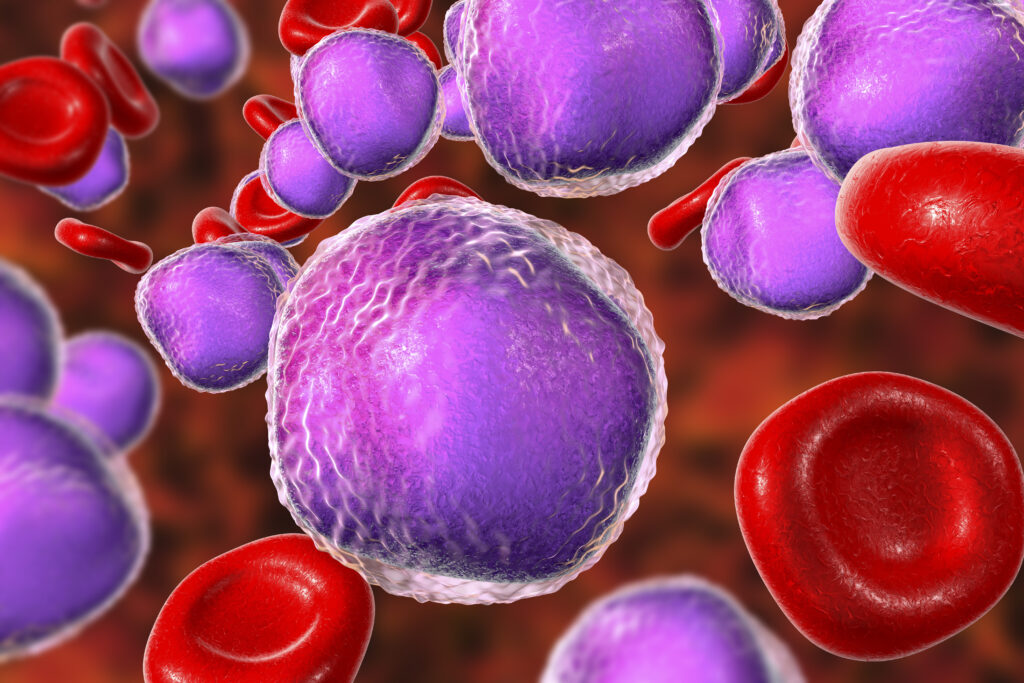‘Time to cure’ around 6 years for young ALL patients regardless of risk status
By Lynda Williams, medwireNews Reporter
UK researchers have a calculated a “time to cure” of around 6 years after diagnosis for children and young adults with acute lymphoblastic leukaemia (ALL), regardless of risk status.
“Knowing when patients with ALL are cured will allow their timely transfer to clinics devoted to monitoring long-term morbidity rather than relapse and facilitates communication to patients and families”, say Ajay Vora (Great Ormond Street Hospital, London) and colleagues in the Journal of Clinical Oncology.
The team collated 10-year clinical outcome data for 3113 individuals aged 1–24 years who participated in the UKALL2003 trial, focusing on the 1054 patients with a standard or intermediate clinical risk of recurrence who responded to a three- or four-drug induction therapy, respectively, and were eligible for minimal residual disease (MRD) stratification.
MRD low-risk patients were randomly assigned to receive one (n=260) or two (n=261) delayed intensification regimens, while MRD high-risk patients were given standard (n=266) or augmented post-remission (n=267) therapy.
The patients were followed up for a median of 10.98 years.
The 10-year event-free survival (EFS) rates for patients with MRD low-risk given one or two courses of delayed intensification therapy were similar at 92.1% and 93.8%, respectively.
Similarly, for MRD high-risk patients, the 10-year rates of EFS were a comparable 82.3% with standard therapy and 87.2% with augmented therapy.
A further 125 study participants had high-risk cytogenetic disease (eg, KMT2A fusions, near haploidy, low hypodiploidy, intrachromosomal amplification of chromosome 21 or TCF3–HLF positivity) and were not eligible for MRD stratification. Overall, 110 of these patients received the augmented schedule including postremission therapy. Augmented therapy achieved a 10-year EFS rate of 70.4% versus 45.7% among the remaining patients who were ineligible for augmented treatment due to toxicity, early death or belated identification of the abnormality.
The likelihood of relapse in patients was initially and significantly predicted in multivariable analysis by age, sex, clinical risk, MRD status and genetic risk factors, Vora et al report.
Nevertheless, this risk of relapse “quickly coalesced” after 5–6 years of follow-up, the team writes, at which point the risk of relapse was less than 1% regardless of risk factors and considered to be the point of “cure”.
Indeed, the authors write that “it is noteworthy and reassuring that the likelihood of relapse for patients with high-risk disease quickly converged with low-risk and intermediate-risk patients and, with the exception of high-risk genetics, was almost indistinguishable 4 years after diagnosis.”
They emphasize that “long-term follow-up of UKALL2003 confirms that treatment reduction in MRD low-risk patients is safe and effective” and results in “similar life expectancy” to that of healthy peers.
The researchers continue: “Treatment intensification remains beneficial for MRD high-risk B-precursor ALL and patients with high-risk cytogenetics.”
News stories are provided by medwireNews, which is an independent medical news service provided by Springer Healthcare Ltd. © 2022 Springer Healthcare Ltd, part of the Springer Nature Group
J Clin Oncol 2022; doi:10.1200/JCO.22.00245

